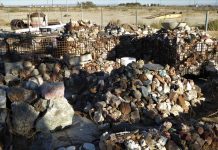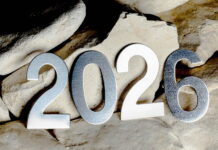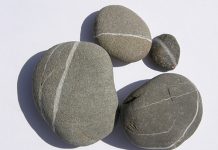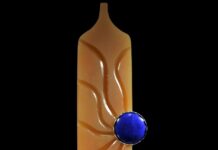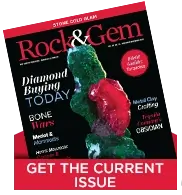
Rockhound beachcombing blends serenity with adventure—an irresistible combination that even James Bond couldn’t resist. In On Her Majesty’s Secret Service, when asked where he plans to spend his two-week leave, the suave secret agent replies, “Just some place to laze about. Beachcombing.” That this hobby would appeal to a worldly spy speaks volumes about its enduring charm. Defined as searching beaches for things of value, interest, or utility, beachcombing connects us with nature all backed by the tantalizing possibility of finding something beautiful, unique or valuable. Although beachcombing today is synonymous with leisure, relaxation and recreation, its origins were far different.
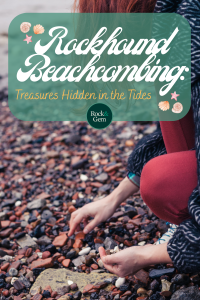
The Origins of Rockhound Beachcombing
The word “beachcomber” initially referred to the long, rolling waves that swept, or “combed,” the ocean beaches. But by 1820, it specifically referred to the British sailors in the South Pacific who, having jumped ship or been shipwrecked, searched island beaches for survival materials.
By the time “beachcombing” first appeared in print in Richard Henry Dana’s Two Years before the Mast (1840), the word had acquired decidedly negative connotations. American missionaries arriving in the Pacific were aghast to find “unkempt, tattooed and naked” beachcombers who they considered “wicked characters.” In the United States and Britain, the word “beachcomber” was used for the impoverished and unemployed.
Rockhound Beachcombing Today
During the late 1800s, “wrecking,” a profitable, commercial form of beachcombing, flourished along the eastern seaboard of the United States, where heavy marine traffic, storms and poor navigation resulted in numerous shipwrecks that littered beaches with timbers and cargo.
But by 1900, as navigation improved and reliable steamships replaced sailing vessels, shipwreck numbers decreased and wreckers faded into history. Meanwhile, as stronger economies increased both leisure time and disposable income, beaches became places for resorts, vacations and recreational beachcombing. Here’s a look at some beaches where minerals, fossils and other materials make beachcombing of special interest to rockhounds today.
Rockhound Finds: Quartz, Jade, and Lake Superior Agate
“Cape May diamonds” await beachcombers at Sunset Beach on Cape May, New Jersey. These “diamonds,” actually cobbles of clear quartz semi-polished by shifting tidal sands, are beautiful collectibles in their frosted, waterworn natural form or tumbled to a glassy luster.
On the West Coast, many rockhounds-cum-beachcombers head to the beaches at California’s coastal community of Big Sur to search for translucent, forest-green nephrite jade. The Big Sur Jade Festival, held each autumn, attracts beachcombers and rockhounds from across the country.
At the western end of Lake Superior, beachcombers search for distinctively colored Lake Superior agate. Colored by traces of oxidized iron, this banded, red, yellow and orange agate is found in the gravels of many lakeshore beaches in Wisconsin, Michigan and Minnesota.
Rare Organic Finds: Jet and Baltic Amber
Beachcombing for amber, a fossilized tree resin, is an old tradition along the southern Baltic beaches of Poland, Lithuania and Kaliningrad, Russia. Even after centuries of collecting, beachcombers continue to find quantities of gem-quality amber, especially after storms have washed new material onto the beaches.
The treasure awaiting beachcombers at Whitby, England, is jet stone, the rare gem variety of lignite coal. Beachcombing for jet at Whitby began about 1500 B.C. and became quite popular during the later Roman occupation. Today, the Whitby beaches are still the world’s premier source of high-quality jet.
Beachcombing for Fossils: From Shark Teeth to Trilobites
Fossils are another beachcombing attraction, especially along southern England’s Jurassic Coast, where huge numbers of Jurassic-age fossils continuously erode from the beach cliffs.
Closer to home, beachcombers collect fossilized shark teeth, trilobites, crinoids, mollusk shells and coral along the beaches of Virginia and Maryland. Virginia’s fossil beaches include those at Westmoreland, Chippokes Plantation, York River and Caledon State Parks; in Maryland, fossils are found on the beaches of Calumet State Park. On Florida’s west coast, beachcombers often find fossilized shark teeth of Miocene and Pliocene age at Venice Beach.
The beaches of northern Lake Michigan reward beachcombers with Petoskey stones. A fossilized rugose coral of Devonian age, Petoskey stone, was designated Michigan’s official state stone in 1965. The best collecting is in spring after winter ice sheets have scoured the beach gravels.
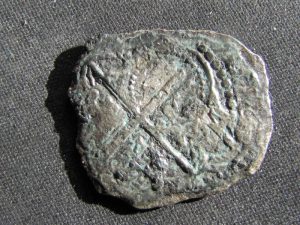
Steve Voynick
Sea Glass and Shipwreck Coins: Beachcomber Treasures
With a bit of luck, beachcombers can also find sea glass and old coins. Most sea glass—frosted, naturally rounded fragments of man-made glass—is usually clear, green or brown; sea glass in the rarer red and blue colors can be quite valuable.
Most coins found on beaches are the modern-day variety dropped by vacationers, but near offshore, historic shipwrecks, old coins of considerable value can also turn up on beaches, such as Delaware’s “Coin Beach” in Delaware Seashore State Park. Just offshore is the wreck of the Faithful Steward, which sank in 1785 with a large cargo of mixed copper coins that can still be found in the beach sands.
Coin-minded beachcombers also frequent east-central Florida’s “Treasure Coast” and the beaches between Sebastian and Vero Beach. The wrecks of the 1715 Spanish treasure fleet are the source of the gold escudos and silver pieces of eight that occasionally turn up on beaches today.
Rockhound Beachcombing: Final Thoughts
Beachcombing has come a long way from its disreputable origins. And even after two centuries, beachcombing, for many people, is still the great escape—even for the likes of James Bond. Rockhound beachcombing is more than a relaxing walk along the shore—it’s a hands-on connection to natural history, geology, and sometimes even lost treasure. Whether you’re after agates, fossils, sea glass, or coins, every tide brings a new chance to discover something remarkable. With the right beach and a bit of patience, rockhounds of all ages can experience the quiet thrill of uncovering the past beneath their feet.
This article about rockhound beachcombing previously appeared in Rock & Gem magazine. Story by Steve Voynick. Click here to subscribe.



